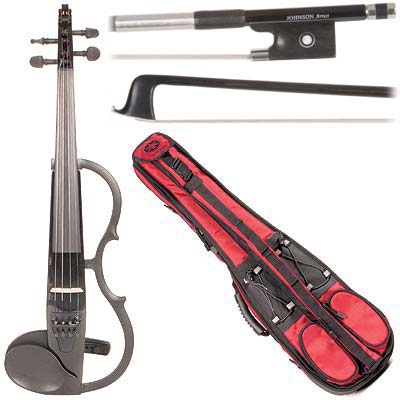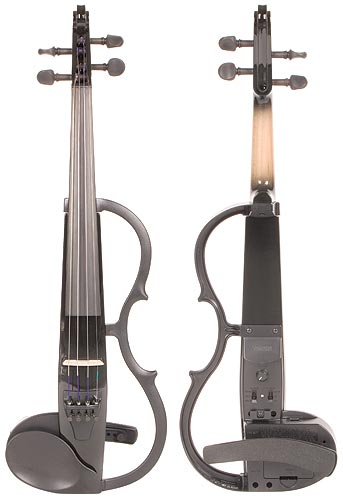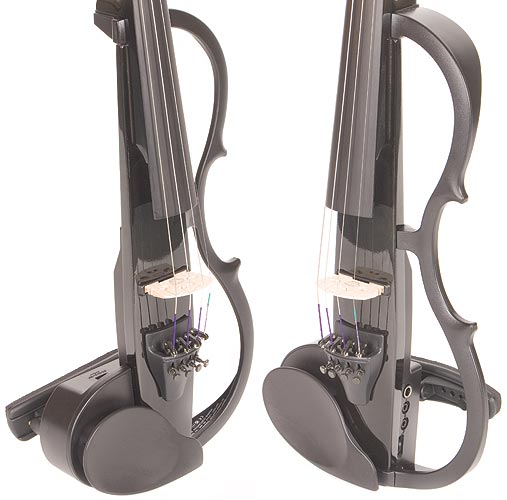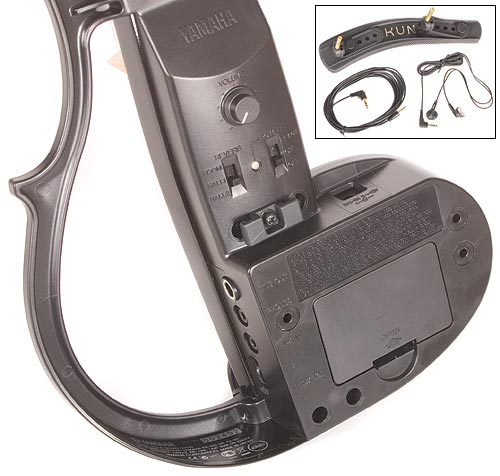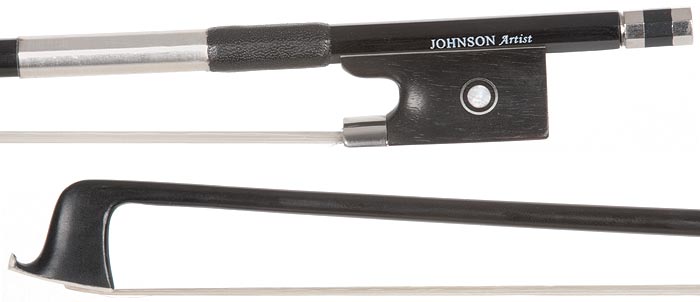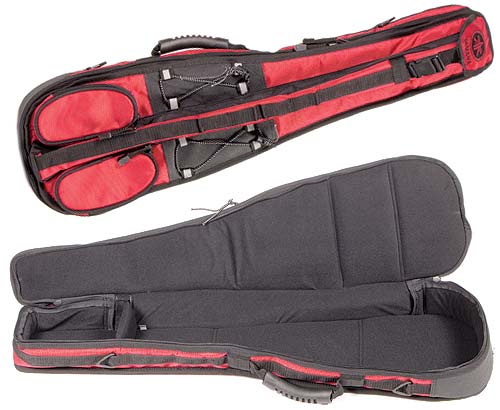Recording Your First Violin
?
On The Home Recording Forum, Kyle Knapp asked about recording a violin for the first time. So, here are a few tips for recording a violin or any other instrument you have never recorded before.
Check out the forum thread: Violin Micing Techniques
Instruments like this (violin, flute, etc) require a natural sound. This is good. When you have to concoct fake stuff (like certain rock drums) you run into trouble. You can't screw this up.
#1 The Room - Take your time and walk around with your violin player and see if there is a place that sounds more pleasing than others. I'm not saying that the bathroom is necessarily right for the song (but it might be). Walking around the room is a big deal to getting a great sound. There will be sweat spots within a room. When in doubt, I'd go with a room with less liveliness. When a really live room is right for a song, you won't have any doubts. Don't be afraid to slap some blankets on a mic stand and move them around to knock down a bad reflection, if necessary.
#2 Avoid harshness - I'd start with the KEL and go from there. If the violin hurts, you failed. End of story. Record the violin a little while. Then, solo it and crank up your monitors. If you feel screeching pain, you need to do something different. (Use a darker mic or a darker sounding mic placement).
#3 Natural sounds seldom come from DIs ("unnatural" isn't necessarily a bad thing). Generally speaking, a mic 2' from the source almost always sounds natural. You can't really lose with this mic placement as long as the room doesn't suck and you aren't picking up too much harshness.
#4 Keep your ears open. When recording a new instrument, you really learn how to engineer. Engineering is about listening and reacting for the song. Throw out methods you may read online (especially anything I tell you..ha ha). Forget about X method being the "right" method. That's bologna anyway. Instead be willing to try stuff if something isn't working.
#5 There is no conventional way of doing this because you've never done it before. So, be willing to put the mic in a really stupid place if it sounds best. Your monitors are your friends now. No one is going to be looking at pictures of your violin mic placement. They will be hearing your album forever (hopefully). I once recorded an acoustic guitar with the mic about 2” from the floor. No one ever complained or even knew about it. (I put up a mic in the conventional spot so the guitar player wouldn't notice).
#6 Keep it simple. If you have never recorded an instrument before, try sticking with a single mic. There is no benefit to crazy stereo (or worse) setups when you are just learning to record a new instrument. Going to tape / disc with a single mic ensures that you like what you are getting. One perfectly placed microphone is 1,000 times better than two mics placed in so-so spots.
#7 Remember that you are capturing a musical performance. Make sure the violin player is giving you what you want. If they have any skill at all (most violin players can do anything you need if they are worth recording at all) than don't settle for less. A big part of the engineering is the producing. If you need a screaming violin, make sure they know that. If you want a smoother, prettier sounding violin make sure they know that.





![the_violin_girl_by_I_Want_Candy_thumb[3] the_violin_girl_by_I_Want_Candy_thumb[3]](https://blogger.googleusercontent.com/img/b/R29vZ2xl/AVvXsEhk2lZtgLu06eivTSWCe0swH6UnTEwTe6OoqQ6TgvFc8f5J6aKR3RtsP1O9kCTCUp8ex_CqvWvusDQaxGwW5cURRHWuvpDlxGbsIsQlrJ2uZurfU7-2trvjX_f6m7l36eWKY-9kNS9bR6M/?imgmax=800)
![577920_409041139120578_408951295796229_1475568_494386701_n[5] 577920_409041139120578_408951295796229_1475568_494386701_n[5]](https://blogger.googleusercontent.com/img/b/R29vZ2xl/AVvXsEgUvOTSQuKIha0iV767x9OA2jsff3zyruFeNpP32HU5WVoglS6G91LD-30bB95UTf6er9FI-58QbbRdcz-fHiTyz8SNiCpn68TCHHQohjRc-iDdwlqQKGOLlOj-1FZB_YhA6bi74vbF77g/?imgmax=800)





















![B1297violin4_4gligascapleu_[1] B1297violin4_4gligascapleu_[1]](https://blogger.googleusercontent.com/img/b/R29vZ2xl/AVvXsEhZrQXEJCMYSCaOB_T5PPdmOZGObgvMpxCw6yRUCbUft6u91IJK7nzUMi3O0_TuCshpdTN7_IDXtWz1bhbm4ILUrEMGnjeq1WuuBdukYB850u_-4ol6SkFShhqryr5DrPC_t375hTebT_8/?imgmax=800)












